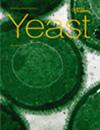通过生态本体框架探索酵母生态学
IF 2.2
4区 生物学
Q4 BIOCHEMISTRY & MOLECULAR BIOLOGY
引用次数: 0
摘要
酵母亚门中的酵母菌遍布全球不同的生态系统。酵母研究的一个主要目的是了解生态性状的多样性和进化,如碳代谢广度、与昆虫的关系和嗜仙人掌性。这包括研究生态性状的各个方面,如遗传结构或与其他表型性状的关联。酵母菌属的基因组资源增长迅速。然而,许多物种的生态学数据仍然有限,尤其是那些仅从物种描述中获知的物种,通常只研究有限数量的菌株。此外,以自然语言格式记录的生态信息也限制了高通量计算分析。为了解决这些限制,我们开发了一个用于分析酵母生态学的本体论框架。酵母环境本体(OYE)共添加了 1,088 株酵母菌株,并通过机器学习框架进行分析,将基因型与生态学联系起来。该框架非常灵活,可以扩展到更多的分离物、物种或环境测序数据。广泛采用 OYE 将大大有助于酵母亚门的宏观生态学研究。本文章由计算机程序翻译,如有差异,请以英文原文为准。
Exploring Saccharomycotina Yeast Ecology Through an Ecological Ontology Framework.
Yeasts in the subphylum Saccharomycotina are found across the globe in disparate ecosystems. A major aim of yeast research is to understand the diversity and evolution of ecological traits, such as carbon metabolic breadth, insect association, and cactophily. This includes studying aspects of ecological traits like genetic architecture or association with other phenotypic traits. Genomic resources in the Saccharomycotina have grown rapidly. Ecological data, however, are still limited for many species, especially those only known from species descriptions where usually only a limited number of strains are studied. Moreover, ecological information is recorded in natural language format limiting high throughput computational analysis. To address these limitations, we developed an ontological framework for the analysis of yeast ecology. A total of 1,088 yeast strains were added to the Ontology of Yeast Environments (OYE) and analyzed in a machine-learning framework to connect genotype to ecology. This framework is flexible and can be extended to additional isolates, species, or environmental sequencing data. Widespread adoption of OYE would greatly aid the study of macroecology in the Saccharomycotina subphylum.
求助全文
通过发布文献求助,成功后即可免费获取论文全文。
去求助
来源期刊

Yeast
生物-生化与分子生物学
CiteScore
5.30
自引率
3.80%
发文量
55
审稿时长
3 months
期刊介绍:
Yeast publishes original articles and reviews on the most significant developments of research with unicellular fungi, including innovative methods of broad applicability. It is essential reading for those wishing to keep up to date with this rapidly moving field of yeast biology.
Topics covered include: biochemistry and molecular biology; biodiversity and taxonomy; biotechnology; cell and developmental biology; ecology and evolution; genetics and genomics; metabolism and physiology; pathobiology; synthetic and systems biology; tools and resources
 求助内容:
求助内容: 应助结果提醒方式:
应助结果提醒方式:


